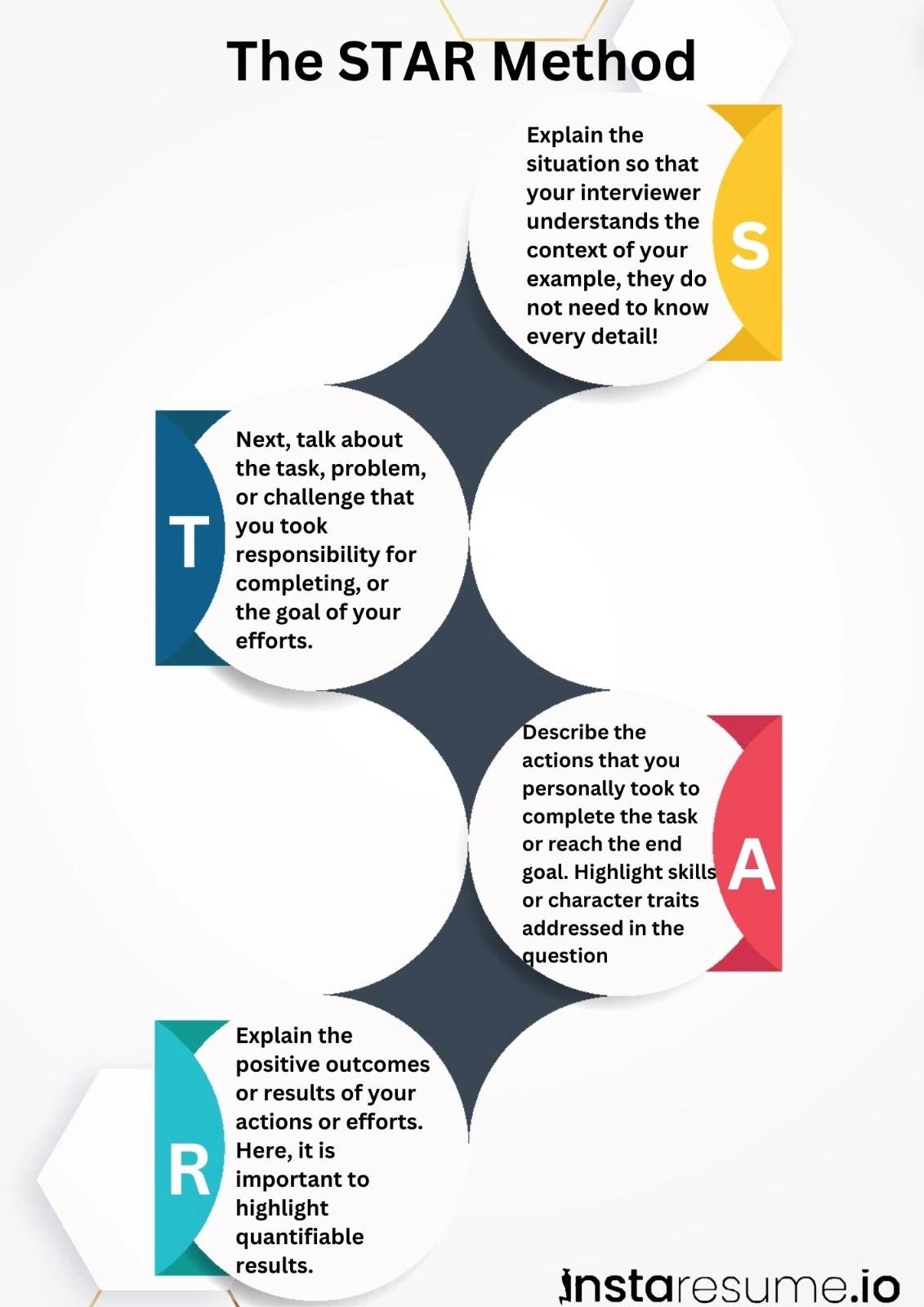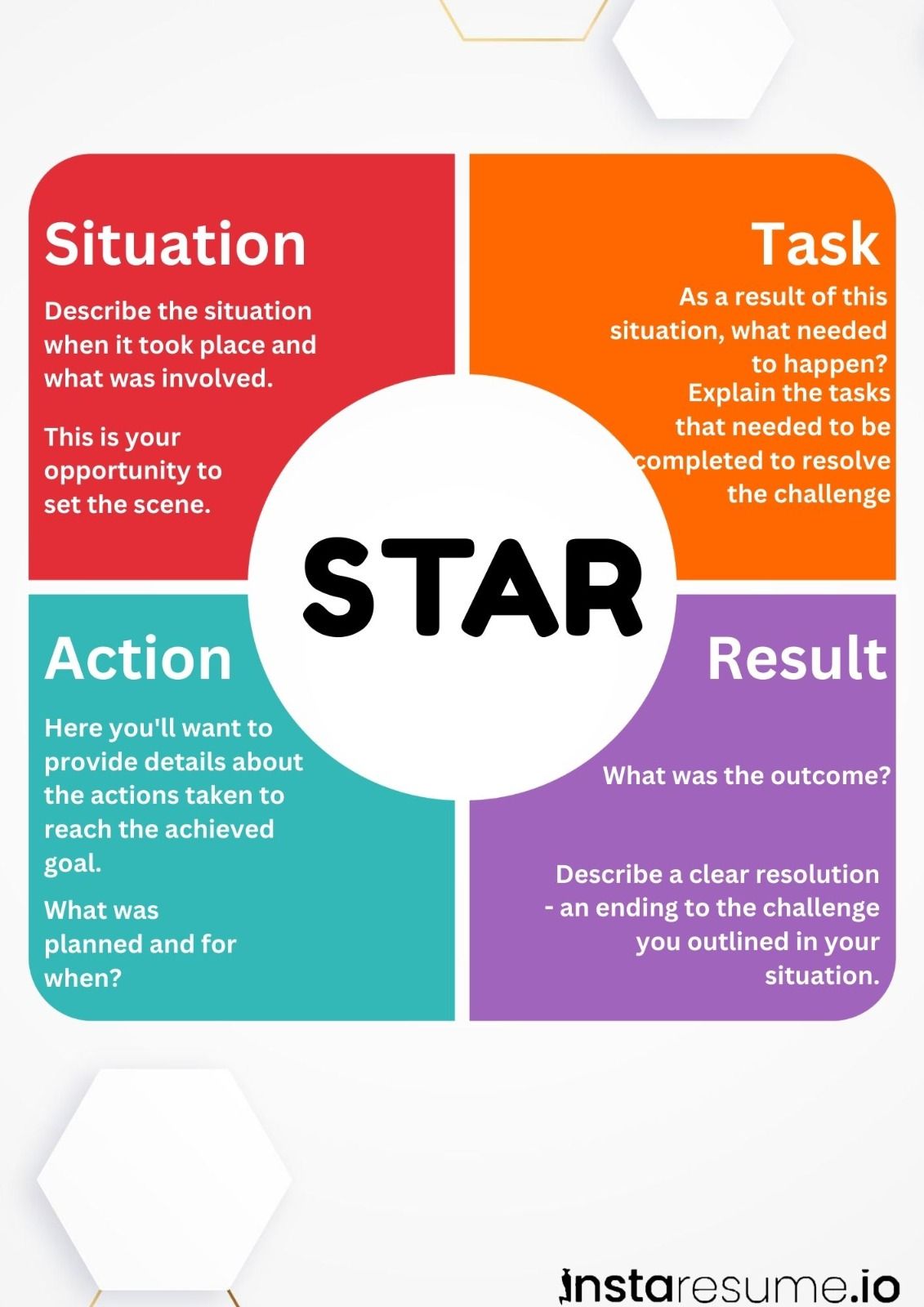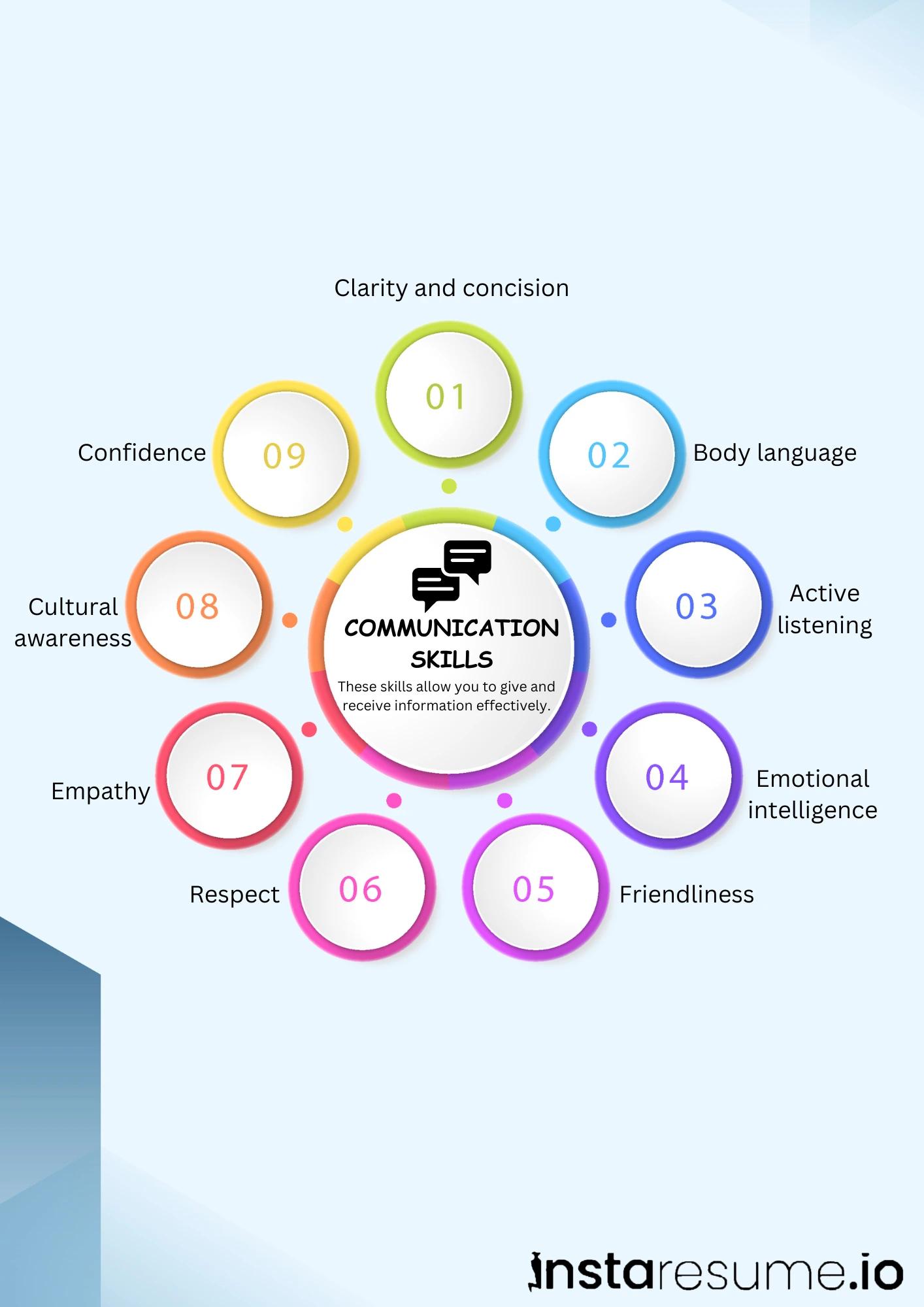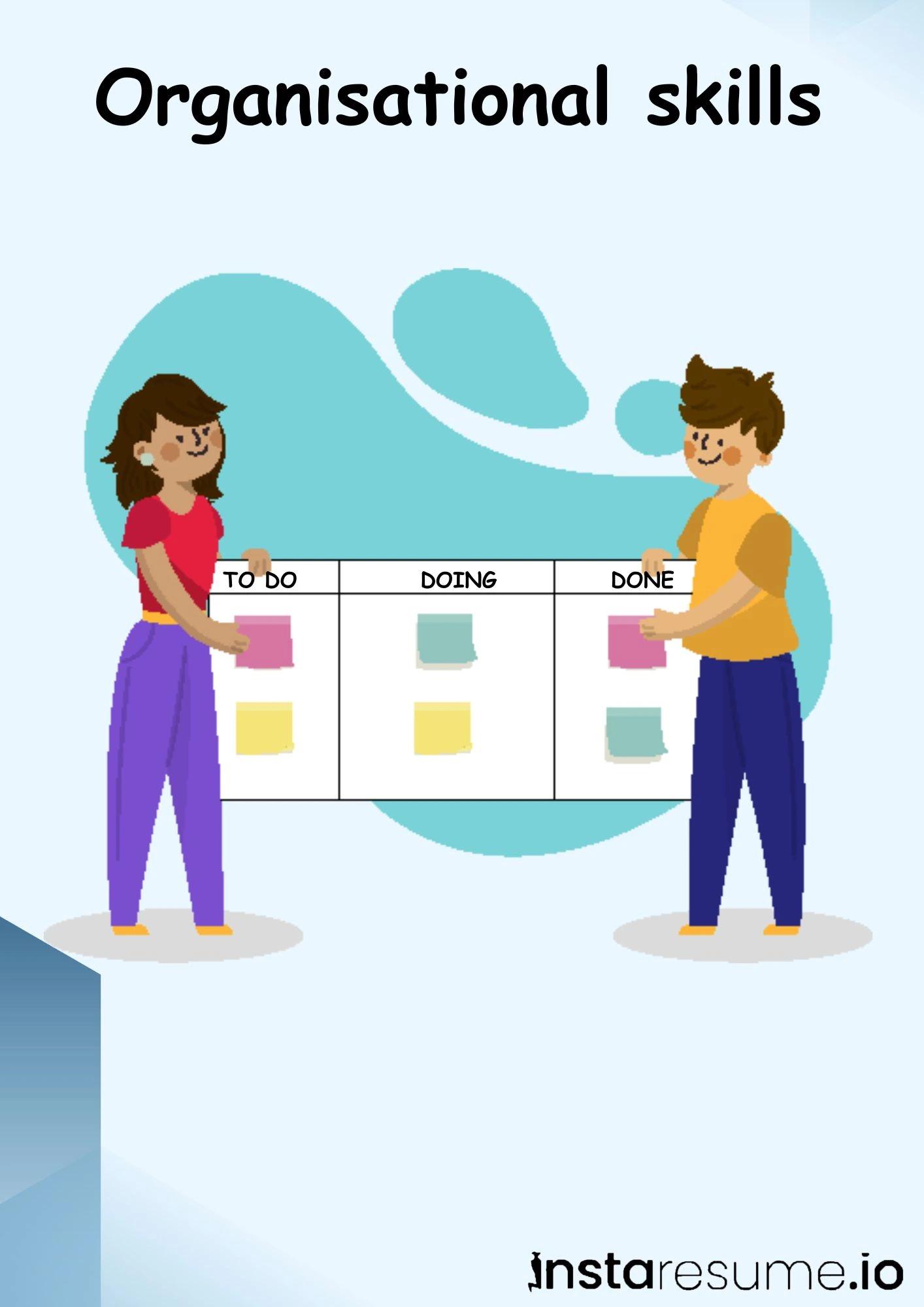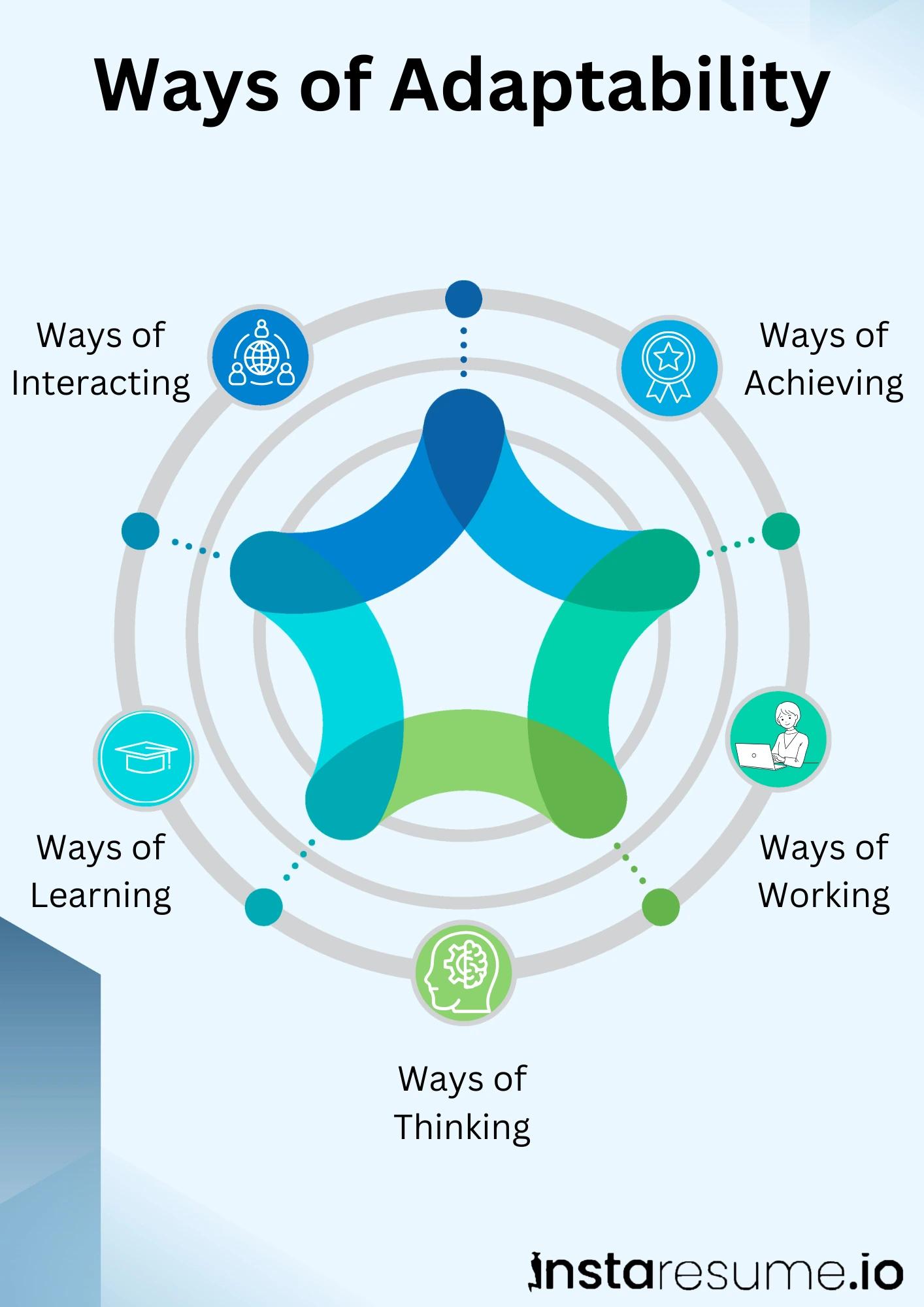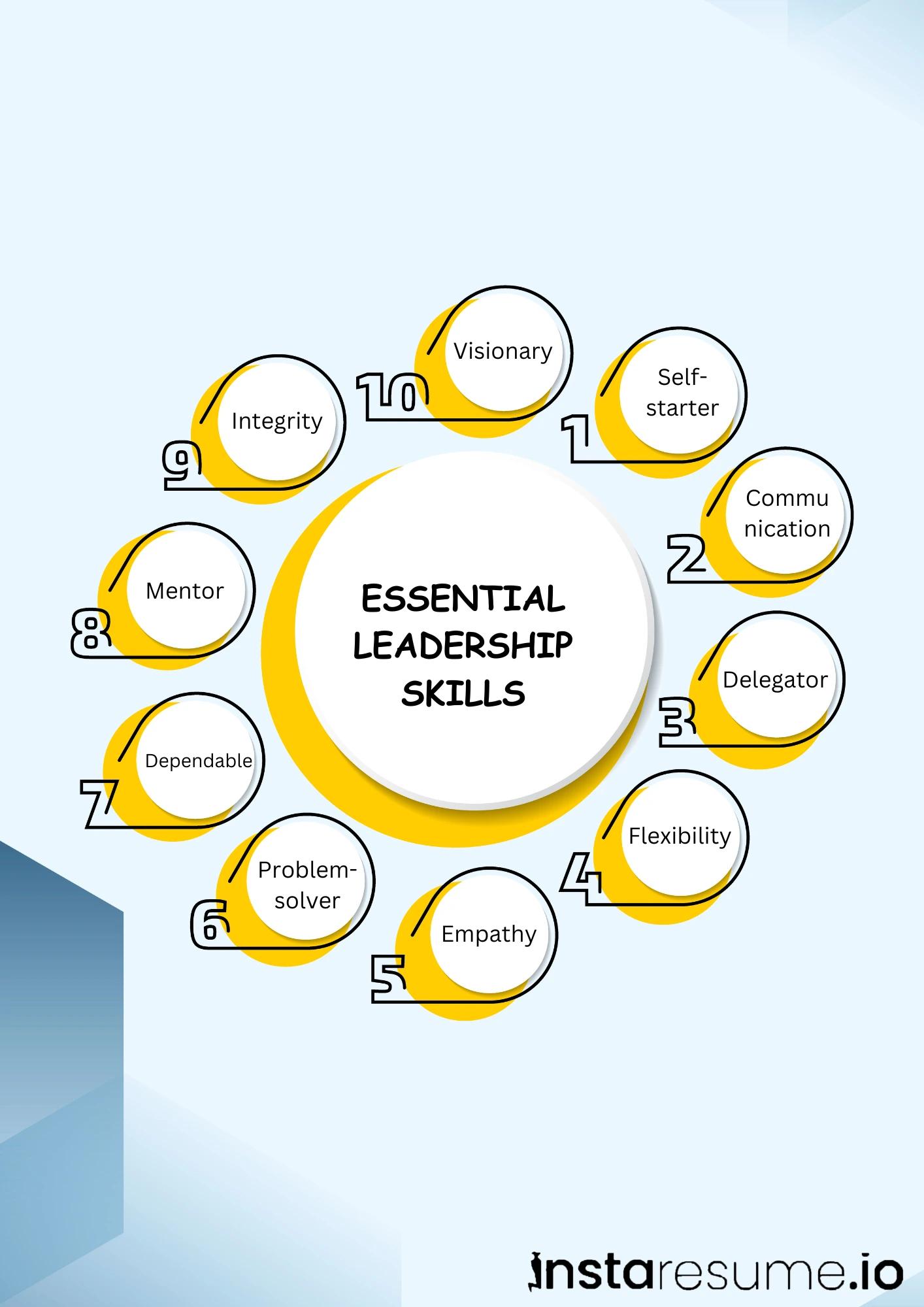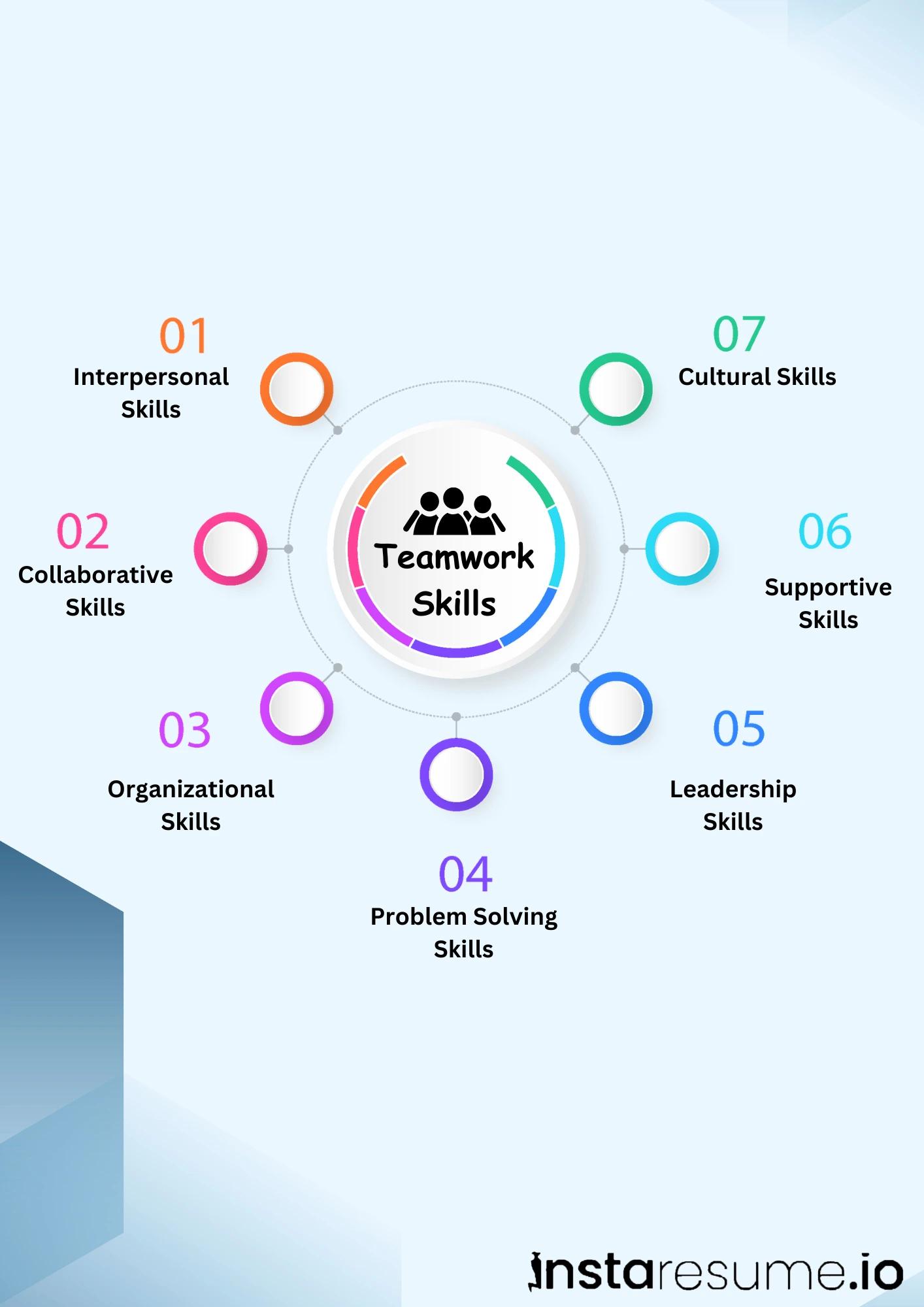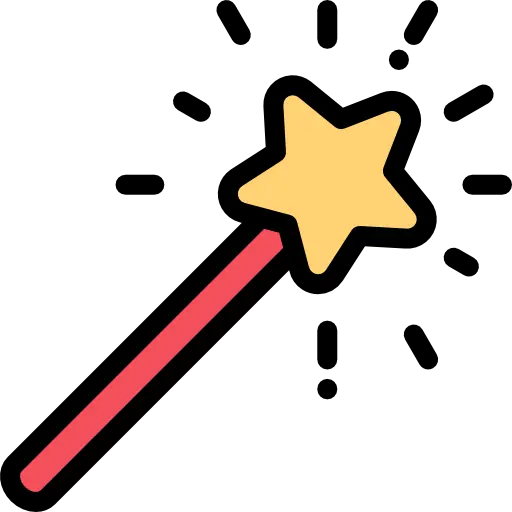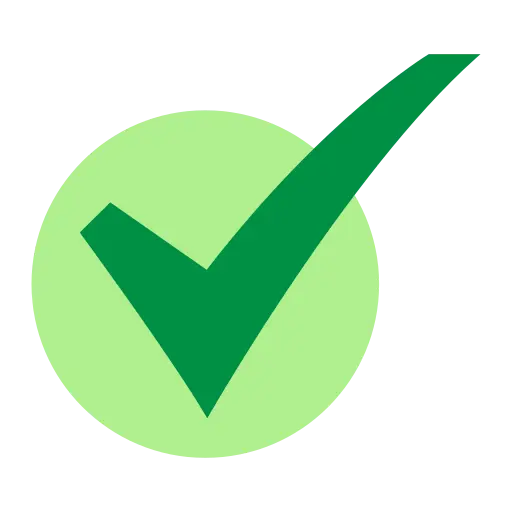15+ Star Interview Questions & Answers
Trust Score: 4.8
355 reviews
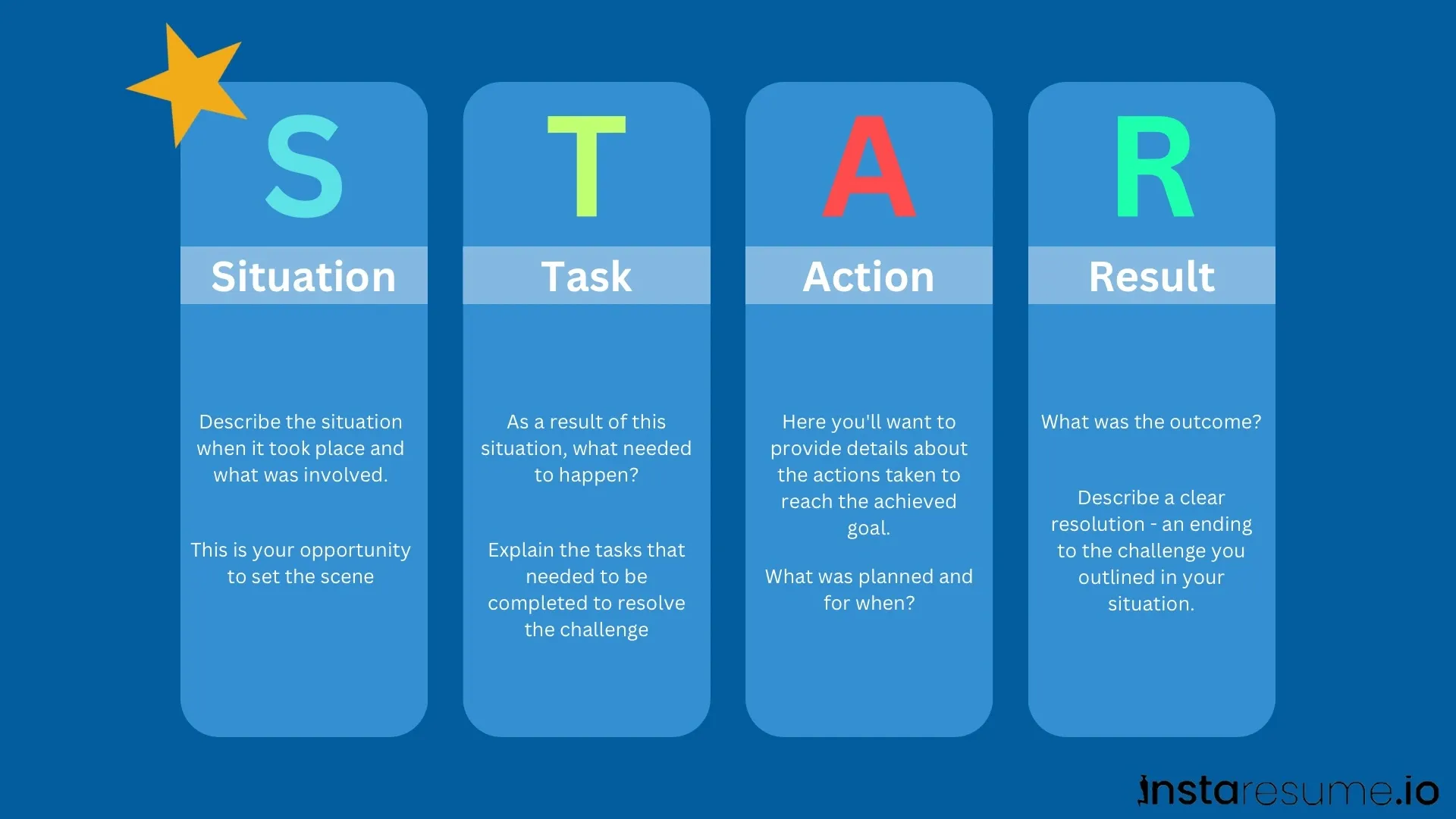
Table of Contents
Interviewing can feel like navigating a minefield, but what if you had a secret weapon to help you shine?
Enter the STAR method!
This powerful technique transforms your experiences into compelling stories, making it easier for you to communicate your value in any interview scenario. Whether you’re a fresh graduate stepping into the job market or a seasoned pro looking to level up your career, mastering the STAR approach can give you the edge you need.
Imagine walking into your next interview equipped with a framework that not only brings clarity and structure to your responses but also leaves a lasting impact on your interviewer. With STAR, you’ll tell your story with confidence, showcasing your skills in a way that resonates.
Get ready to impress—because with the STAR method, you’re not just answering questions; you’re crafting narratives that make you unforgettable!
In this blog, we’ll cover:
 What the STAR Method is and why it’s essential for interviews.
What the STAR Method is and why it’s essential for interviews. A breakdown of the STAR Method with sample answers.
A breakdown of the STAR Method with sample answers. A list of 18 STAR method interview questions categorized by skill: communication, organizational, adaptability, teamwork, leadership, and problem-solving.
A list of 18 STAR method interview questions categorized by skill: communication, organizational, adaptability, teamwork, leadership, and problem-solving. FAQs about STAR interview questions.
FAQs about STAR interview questions. Key takeaways to help you ace your next interview.
Key takeaways to help you ace your next interview.
What is the STAR method?
The STAR method is a popular interview technique that helps you answer behavioral interview questions in a structured, concise, and impactful way. STAR stands for:
SITUATION
Describe the situation to set the scene.
Provide context to your story, including the environment and any relevant background.
Example: “At XYZ Corporation, we faced a critical product launch scheduled for the end of the quarter. A week before the launch, we discovered that a key software component was delayed due to technical issues.”
TASK
Explain the task you needed to accomplish.
Outline your specific responsibilities and the goals you needed to achieve.
Example: “As the project manager, I needed to determine whether to proceed with the launch as planned or postpone it, ensuring all stakeholders were informed and the launch goals were met.”
ACTION
Detail the actions you took to address the situation.
Explain the steps you took and the skills you employed.
Example: “I organized a meeting with the engineering team to discuss solutions and decided on a temporary patch to allow the product to launch. I communicated the changes to the marketing team and set up daily check-ins to monitor progress.”
RESULT
Share the outcome, ideally with measurable results.
Describe the results of your actions, highlighting your impact.
Example: “We successfully launched on time, generating $500,000 in sales within the first month, exceeding projections by 20%. This experience improved cross-department collaboration for future projects.”
STAR Method interview question sample
Let’s walk through an example of a STAR response to the question:
Describe a time when you achieved a challenging goal
Here’s an example of answering the question "Describe a time when you achieved a challenging goal" using the STAR method:
Situation
In my previous role as a marketing coordinator, I was tasked with increasing brand awareness and customer engagement for a newly launched product in a highly competitive market. Our company’s visibility was minimal compared to established competitors, and we had a limited budget to work with.
Task
The primary goal was to create a marketing campaign that would achieve at least a 20% increase in product inquiries within three months, despite our budget constraints.
Action
I began by conducting in-depth market research to identify the most effective platforms and strategies to reach our target audience. I leveraged cost-effective methods such as social media campaigns, partnerships with micro-influencers, and engaging user-generated content.
Additionally, I designed a referral program to incentivize existing customers to share the product with their networks. I collaborated with the design and content teams to produce visually appealing and relatable content while ensuring consistent messaging.
Result
The campaign exceeded expectations, resulting in a 35% increase in product inquiries within the three-month timeframe. The referral program alone generated 20% of the leads, while social media engagement grew by 50%. This success not only met the company’s goals but also gained recognition from senior leadership, leading to additional budget allocations for future projects.
15 STAR method strategic interview questions to ask candidates
Questions where the STAR method can come in are easy to spot.
Usually, these are questions that ask you to tell a story. The question itself is probably going to ask about a work situation and how you reacted to it.
Let’s look at some of the most common STAR interview questions by category:
Communication Skills
1. Describe a time you had to explain a complex concept to a colleague or client.
Situation: In my previous role as a data analyst, I often needed to present analytical insights to clients with little technical background. One of our clients was struggling to understand the predictive modeling we were using for their project.
Task: My task was to break down this complex statistical method into a more understandable explanation for the client so they could appreciate its relevance to their project.
Action: I used an analogy, likening the predictive model to weather forecasting, and created simplified visuals like charts and diagrams. I presented a high-level overview and avoided technical jargon to keep it relatable.
Result: The client left the meeting with a much clearer understanding and confidence in our model, which helped improve our working relationship. They were able to use these insights in their business strategy, which boosted our credibility with them.
2. Tell me about a time you had to manage a conflict within a team.
Situation: During a project, two team members had a disagreement over the direction of a key task, which started to cause tension within the team and delayed our progress.
Task: As the team lead, I needed to mediate and find a solution that allowed everyone to work harmoniously and kept the project on track.
Action: I scheduled a meeting with both team members to listen to their perspectives. I facilitated a calm and open discussion, encouraged each to express their ideas, and guided them toward a compromise that incorporated both viewpoints.
Result: Both team members felt respected and heard, and we were able to integrate the best aspects of both ideas. This solution enabled us to complete the project on time and improved team morale.
3. How did you handle a situation where you had to deliver bad news?
Situation: While managing a client project, we encountered unforeseen technical issues that would delay our delivery date by several weeks.
Task: I needed to communicate this delay to the client while maintaining their trust and managing their expectations.
Action: I arranged a meeting with the client, provided a transparent overview of the issues, explained the steps we were taking to resolve them, and proposed a new timeline. I also offered a few alternative strategies to ensure minimal impact on their operations.
Result: The client appreciated our honesty and collaborative approach. They accepted the new timeline and stayed with us for future projects, citing our professionalism as a reason.
Organizational Skills
1. Describe a time you had to prioritize tasks under tight deadlines.
Situation: I was working on three different projects for three different clients, each with overlapping deadlines. One client’s project required immediate attention due to an unexpected issue.
Task: My task was to prioritize my workload in a way that allowed me to meet all deadlines without compromising quality.
Action: I created a list of all tasks, evaluated their urgency and complexity, and reallocated time based on priority. I communicated with all clients to set expectations, ensuring they were aware of adjusted timelines.
Result: I met all deadlines successfully, and each project was delivered with high quality. My clients were impressed with the timely updates, which helped build trust in my ability to handle tight schedules.
2. Tell me about a time you managed multiple projects simultaneously.
Situation: As a project coordinator, I was responsible for overseeing multiple campaigns at once, each with different timelines, goals, and stakeholders.
Task: I needed to manage each project efficiently, ensuring that none fell behind despite the varying demands.
Action: I created a detailed project plan for each campaign and scheduled regular check-ins. I used a project management tool to track progress, deadlines, and dependencies, and delegated tasks when necessary to maintain productivity.
Result: All projects were completed on time and within budget. My structured approach led to positive feedback from stakeholders, and I was able to balance the workload effectively.
3. How did you ensure accuracy while handling a complex task?
Situation: I was assigned to conduct a data analysis for a major client, and accuracy was crucial because the results would influence the client’s business decisions.
Task: My task was to ensure that my analysis was both comprehensive and error-free.
Action: I double-checked all data inputs, reviewed each step of my calculations, and conducted a peer review to get a second opinion on my work. I also set up validation checks to catch any potential discrepancies.
Result: The analysis was delivered without any errors, and the client’s decisions based on my report led to improved outcomes. This project strengthened my reputation for attention to detail and reliability.
Adaptability
1. Tell me about a time you had to adjust to a major change in your job.
Situation: My company underwent a reorganization, and I was reassigned to a new team with different responsibilities.
Task: I needed to quickly adapt to a new role, learn new skills, and integrate with a new team.
Action: I took the initiative to attend training sessions, familiarized myself with the team’s workflows, and proactively sought feedback from my manager and colleagues to align my efforts with the new team’s goals.
Result: I was able to adapt quickly and became a valuable contributor. My manager appreciated my proactive approach, and I was soon trusted with more responsibilities.
2. Describe a situation where you had to learn a new skill quickly.
Situation: During a project, I had to learn a new software program that was essential for completing a key analysis.
Task: I needed to quickly become proficient in the software to meet the project’s tight deadline.
Action: I enrolled in an online course, practiced using the software outside of regular work hours, and reached out to a colleague who was experienced with the tool for guidance.
Result: I gained enough proficiency in a short time to complete the analysis accurately and on schedule, which impressed both my team and the client.
3. How did you handle a sudden shift in project priorities?
Situation: Midway through a project, our client requested a shift in focus that required us to change the scope of our work.
Task: I needed to reorganize our workflow and ensure that my team could pivot quickly without losing momentum.
Action: I called an emergency team meeting to communicate the new priorities, re-assigned tasks based on the updated requirements, and outlined a revised timeline.
Result: My team adapted seamlessly to the changes, and we delivered the revised project on time. The client was pleased with our flexibility and responsiveness.
Leadership
1. Tell me about a time you motivated a team during a challenging project.
Situation: I was leading a team on a high-stakes project for a new client. The timeline was extremely tight, and there were multiple challenges with resources and unexpected technical issues. As deadlines approached, I noticed that team morale was dropping, and people were feeling overwhelmed.
Task: My task was to find a way to lift team morale and keep everyone motivated to push through, despite the intense workload and pressure.
Action: I organized a team meeting to acknowledge the hard work everyone had been putting in and openly discussed the challenges we were facing. I introduced a system to break down our goals into smaller milestones, allowing us to celebrate each small win. Additionally, I encouraged each team member to share their progress, ideas, and any blockers they were experiencing, creating a collaborative environment. To keep the atmosphere positive, I added a few small rewards for reaching each milestone, and I was mindful to check in with team members individually to provide support and encouragement where needed.
Result: Morale improved, and the team became more cohesive and motivated. By focusing on smaller goals, the workload felt more manageable, and we gained momentum as we completed each phase. Ultimately, we finished the project on time, and the client was very pleased with the outcome. The experience also strengthened our team dynamics for future projects.
2. Describe a situation where you delegated tasks effectively.
Situation: I was overseeing a project that required diverse expertise, including research, analysis, and client presentations. The project had a tight deadline, and completing it on time required that each team member work efficiently in their areas of expertise.
Task: I needed to delegate tasks in a way that leveraged each team member’s strengths while ensuring that all parts of the project were completed on schedule.
Action: I reviewed each team member's skills and experience to match tasks with their strengths. For instance, I assigned the research tasks to those with strong analytical skills, presentation work to those with communication strengths, and data analysis to those familiar with the specific tools we needed. I outlined each person’s responsibilities and set up clear communication channels for collaboration. Additionally, I set up progress checkpoints and encouraged the team to reach out if they encountered any issues or needed guidance.
Result: Each team member was able to work confidently in their assigned roles, and the project stayed on track. The final deliverable exceeded expectations, as everyone had focused on their strengths. The client appreciated the quality of our work, and the team valued the clarity and support provided throughout the process.
3. How did you handle a difficult team member?
Situation: I was leading a project with a team member who was struggling with deadlines, resisted constructive feedback, and often seemed disengaged. Their behavior was starting to affect the team’s productivity and morale.
Task: I needed to address this issue diplomatically, helping the team member improve their performance while minimizing any impact on the rest of the team.
Action: I scheduled a private one-on-one meeting with the team member to discuss their perspective on the project and to understand any underlying issues. During the meeting, I provided specific examples of how their actions were impacting the team and offered constructive feedback. We collaborated to set clear, achievable goals and expectations for their role, and I made myself available for additional support if needed. I also established weekly check-ins to monitor progress and provide ongoing guidance.
Result: The team member’s performance gradually improved, and they became more engaged with the project. They started meeting deadlines more consistently and showed a willingness to accept feedback. The entire team’s productivity and morale increased as a result, and the experience taught me the importance of open communication and tailored support in handling difficult situations.
Teamwork
1. Describe a time you collaborated with someone with a different working style.
Situation: I was working on a project with a colleague whose working style was very detail-oriented and methodical, while my approach was more fast-paced and goal-focused. Our contrasting styles occasionally led to friction, as we struggled to align our timelines and expectations.
Task: To ensure the project’s success, I needed to find a way to bridge our working styles and create a balanced approach that leveraged both of our strengths.
Action: I scheduled a meeting with my colleague to openly discuss our differences and identify areas where we could adapt to each other’s approach. We agreed to set regular check-in points, allowing my colleague time for thorough reviews and me the opportunity to maintain momentum. I also took extra care to ensure I provided detailed updates, which helped them feel more comfortable with the pace, while they worked on streamlining their feedback process to keep things moving forward.
Result: This approach created a strong collaborative environment, and we were able to leverage our differences to improve the project. Our combined perspectives led to a well-rounded outcome, with fewer errors and a quicker timeline than we initially anticipated. Both of us gained valuable insights into adapting our working styles, and the project was a success.
2. Tell me about a time you supported a teammate who was struggling.
Situation: I noticed that one of my teammates was struggling to keep up with their workload due to a mix of personal challenges and an especially demanding project assignment.
Task: As part of the team, I felt it was important to support them and help ensure that their struggle didn’t impact the overall project.
Action: I approached them privately to offer help, making sure they felt comfortable sharing their challenges. I offered to assist with some of their tasks temporarily and suggested we speak with our manager to redistribute the workload more evenly among the team. Additionally, I helped them set up a more manageable schedule and offered a few productivity tips that I found helpful.
Result: With the redistributed workload and schedule adjustments, they were able to regain their footing and felt much more supported by the team. This experience brought us closer as a team and improved our productivity overall, as everyone knew they could rely on each other during tough times.
3. How did you contribute to a team project’s success?
Situation: I was part of a team working on a complex project with a tight deadline. Each team member was responsible for a specific part, but the tasks were highly interdependent, requiring close collaboration to meet the deadline.
Task: My role was not only to complete my own responsibilities but also to ensure that we coordinated effectively, so everyone could stay on track.
Action: I took the initiative to organize regular update meetings, where we discussed our progress and any challenges we were facing. I encouraged open communication to prevent any bottlenecks and offered to help team members who were running behind on certain tasks. I also created a shared document where we could track our progress and quickly identify any areas that needed extra support.
Result: This approach kept the project moving smoothly, and we completed it on time. The client was very impressed with the quality of our work, and the project served as a learning experience for future teamwork. My team appreciated the support and structure, which led to a stronger collaborative culture in future projects.
FAQs
What is the STAR Method for answering interview questions?
The STAR method is a structured way to answer behavioral interview questions by breaking down your response into four parts: Situation, Task, Action, and Result. This approach helps you clearly explain past experiences and showcase problem-solving skills. Just like a free resume builder makes your application process easier, the STAR method simplifies interview answers by giving them a professional format.
Why do interviewers ask STAR questions?
Interviewers use STAR questions to assess how you’ve handled real-life situations in the past. These answers often predict how you’ll approach future challenges. It’s similar to how a resume builder free tool highlights your career story—STAR responses highlight your professional strengths in a structured way.
What types of questions are best answered with the STAR method?
STAR works best for behavioral questions that begin with “Tell me about a time…” or “Describe a situation where…” These are designed to evaluate your past behavior in workplace scenarios. Preparing these responses is as important as creating a free resume with the right skills and achievements.
How detailed should my responses be when using the STAR method?
Your answers should be concise yet detailed enough to provide context. Ideally, a STAR answer should last 1–2 minutes. Think of it like choosing free resume templates—you include only the most relevant details that make your profile stand out.
Can the STAR method be used for all types of interview questions?
While STAR is effective for behavioral questions, it’s not necessary for technical or hypothetical ones. Use it where you need to highlight real experiences, just as you’d use a free resume maker to highlight your career history when applying for jobs.
What if I don’t have a relevant example for a STAR question?
If you lack direct experience, use examples from internships, projects, or volunteering. If that’s not possible, describe what you would do in the situation. Similarly, if you don’t have a resume ready, you can use an online resume maker free PDF download option to quickly create one tailored to the role.
How can I prepare for STAR interview questions?
Start by identifying experiences from past roles that demonstrate skills like leadership, teamwork, and adaptability. Practice structuring them with STAR. To boost preparation, pair it with career tools like a resume builder so your application and interview performance are both strong.
What are common mistakes when answering STAR questions?
Mistakes include being too vague, skipping results, or focusing only on the situation. Each STAR answer should clearly highlight your actions and their impact. The same rule applies when creating a free resume—avoid unnecessary details and focus on results.
How many STAR responses should I prepare before an interview?
It’s smart to prepare at least 5–6 STAR stories that showcase different skills such as problem-solving, teamwork, and communication. Just like having multiple versions of a resume builder free template, you should have multiple responses ready for different types of questions.
What’s the best way to conclude a STAR response?
End your answer by emphasizing a positive outcome and what you learned from the experience. This leaves a lasting impression—just like a polished free resume builder PDF does when applying for jobs.
Key Takeaways
Structured responses
The STAR method helps you organize your answers in a clear and logical manner, making it easier for interviewers to follow your thought process. Just like using a free resume builder to structure your job application, STAR gives your interview answers a polished format.
Behavioral focus
STAR is particularly effective for behavioral interview questions, allowing you to highlight your past experiences and demonstrate relevant skills. Preparing these stories is as important as preparing a free resume that highlights your best achievements.
Components of STAR
Remember the four parts of the STAR framework, which work just like sections in a resume builder free template:
 Situation: Set the context for your story.
Situation: Set the context for your story. Task: Explain your specific responsibility in that situation.
Task: Explain your specific responsibility in that situation. Action: Detail the steps you took to address the task or challenge.
Action: Detail the steps you took to address the task or challenge. Result: Share the outcome of your actions, emphasizing any positive impacts or lessons learned.
Result: Share the outcome of your actions, emphasizing any positive impacts or lessons learned.
Preparation is key
Prepare a range of STAR stories ahead of time that showcase different competencies relevant to the job. Just like customizing free resume templates, tailor these examples to the specific role and company culture.
Keep it concise
Aim to keep your STAR responses between 1–2 minutes. Be detailed enough to convey the necessary information without rambling. Think of it like using an online resume maker free PDF—you want all the key details, but in a compact format.
Emphasize outcomes
Highlight the results of your actions, as this demonstrates your effectiveness and the value you can bring to the organization. The same applies when you use a free resume maker—results matter more than just responsibilities.
Practice makes perfect
Rehearse your STAR stories to become comfortable with the format. A confident delivery is as crucial as having a strong resume created with a resume builder.
Adapt when necessary
While STAR is ideal for behavioral questions, be ready to adjust your approach for other types, such as technical or situational questions. Similarly, while one resume builder free version may work for most jobs, sometimes you need a custom version for specialized roles.
Learn from each experience
Use the STAR method not only to share accomplishments but also to discuss challenges and how you’ve grown from them. This shows resilience and adaptability. It’s the same principle behind updating your free resume with new skills and achievements over time.
Engage your interviewer
After delivering your STAR response, be open to follow-up questions. This shows that you are engaged and willing to provide more context or details. Just like a free resume builder PDF gives a clear starting point for discussions, STAR answers open the door for deeper conversations in interviews.


